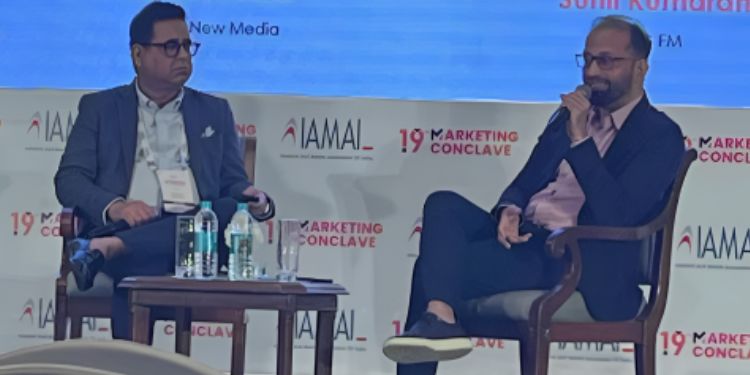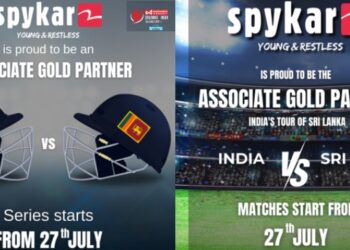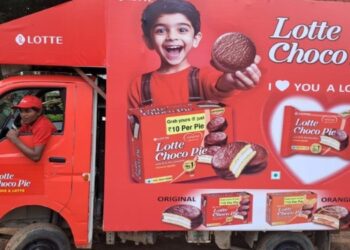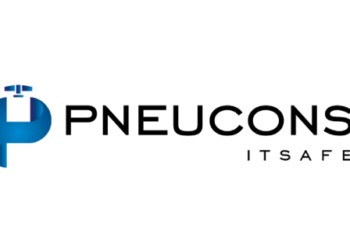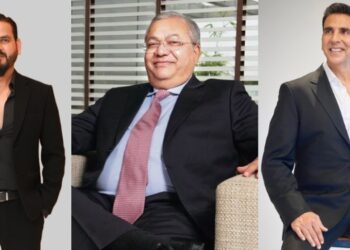The 19th edition of the Internet and Mobile Association of India’s (IAMAI) Marketing Conclave (MarCon) was hosted on November 22, 2023 in Mumbai, on the theme ‘Tomorrow’s Canvas: Tech and the Art of Marketing’.
Opening proceedings was a session themed ‘A New Era of Digital Publishing: Maximise growth through innovative storytelling’ that featured Gaurav Arora, COO, Jagran New Media, in conversation with Sunil Kumaran, Country Manager – India and COO – MENA, Big FM.
Arora set the tone stating that the session was essentially about content: “Most of the brands have started to invest a lot in content. Advertisers and brands trust us to create great content because our expertise – our DNA is about creating content. On top of that, the radio business and the digital business like ours, we also have a great understanding of audiences. So when you combine the understanding of markets and also the content that works, what comes up is highly engaging and directly relevant content.”
The Role of Storytelling
He urged his fellow speaker to share insights into the role of storytelling, content quality and authenticity in maintaining and gaining consumer trust. “How are brands ensuring that their content aligns with these values?” he posed.
Kumaran observed that the power and effectiveness of storytelling has been chronicled to a large extent. .
“If you ask a typical storyteller or a creator, they will rattle out the whole model of storytelling, saying that you need to build the characters, need to build the context, you need to build the conflict and the resolution – the classic format. So art is well understood. A lot of people have also now understood the science behind the art of storytelling. I think that has really changed the game of storytelling,” he noted.
Kumaran explained how storytelling can go beyond the language processing part of the audience’s brain.
“The moment you switch to a storytelling form, you start impacting the other aspects of the brain like the sensory aspects, the motor aspects. You like more emotions, more empathy, old memories get triggered. People understand the science now. I think that’s the reason why so much importance has shifted to storytelling. In radio, for instance, we have been practising the art storytelling for a really long time and honing that skill over a period of time. So it goes without saying that storytelling is much more immersive, that much more important to drive people. Its ability to engage people is that much sharper,” he added.
“At the end of the day, what are brands looking for? We are not just looking for eyeballs and I think the game, in digital especially, has shifted far beyond eyeballs. So, if you want people to be a little more immersed, little more engaged, you have to get down to storytelling and depth of storytelling,” he emphasised.
Authenticity Through Continuity, Transparency
In the context of content, the speaker touched upon the need for authenticity and the need to come across as authentic with content.
“If you really break authenticity down, it really comes down to a clear vision for the brand or the content creator. You need continuous engagement with your audiences because you cannot be authentic when you are sporadic. The third aspect is transparency. You have to say it the way it is, instead of sugarcoating it or exaggerating it. And transparency is a very difficult thing to practice – not just for content creators but more importantly for brands,” he said.
While storytelling is important, the format of storytelling is evolving, observed Kumaran.
“We all have to understand that there is a lot of content, the supply side is kind of bursting and so are the consumers. The consumers have so many options that they have started making more active choices. And as the consumer evolves, they are going to make more active choices. They are not going to watch anything that’s dished out to them,” he warned.
The speaker underlined the need to start adapting to formats and technology to stay relevant and stay connected while engaging in storytelling.
From Content Solutions to Business Solutions
Arora pointed to the rise of video advertising formats. “Video formats are being produced a lot more. Would you have an idea from an advertiser perspective, what is it that seems to be working that they’re spending so much (on it)?” he asked Kumaran.
The Big FM spokesperson countered that the content business should be defined based on what it can deliver in terms of business outcomes. He contended that advertisers have shifted in terms of how they measure content – from aspects like reach, frequency and likes, to business outcomes.
“It accelerated post the Covid period, but in the last one year the conversation has completely shifted – now we are only having conversations on business. The client is not saying that you come up with a content solution, but saying you come up with a business solution,” explained Kumaran.
Responding to the question on video content, the speaker noted that while video is effective, the right content needs to be used for different video formats.
He said, “Video is obviously well-sought after because of the sheer power of video. I think most people understand the value of video but they don’t understand how video needs to be used differently across different platforms. (sic) I cannot put a long story on a short video. I need to understand the mindset with which that person is coming to a short video platform. He’s not coming for depth, he is coming to kill time or get entertained. Video is effective. In fact, the most effective, if you want to put it that way, but when used in the right format.”
Influencers in Focus
Arora noted that publishers are actually sandwiched between the big tech and the individual content creators.
“For us to be relevant and significant, we’ve started to work with them (influencers) a lot.
We partner with them, take them to the advertisers and create content along with them,” he noted.
Asked about Big FM’s experience of working with influencers and trying to put out effective business solutions, Kumaran said, “We have been in the influencer marketing space by default because like you said, we are present in 58 markets. And 58 markets with 100-plus jocks, each of them having their presence on radio and on social platforms. It’s been an interesting journey for us and there are a lot of learnings that we picked up along the way.”
The speaker pointed to the foremost learning, which is to distinguish between a celebrity endorsement and influencer marketing.
While celebrity endorsers have their place in advertising, an influencer has to be trustworthy, he underlined.
“The most important aspect of influencer marketing is that I, as a consumer of that influencer content, have to believe that I can trust the influencer because that’s the fundamental premise on which influencer marketing works. We have to find a very seamless way of integrating the messaging into the content narrative rather than the other way around. Consumers are not coming to look at your ad. Consumers are coming to an influencer because they love the influencer. The solution to do influencer marketing is using micro and nano influencers.”
On the subject of effectiveness of influencer marketing, he added, “When it comes to effectiveness, it’s a big debate. We see a lot of traction when it comes to artistes who are not national influencers, but they are micro, nano influencers, because the depth at which they can engage with the audience is significantly higher, thereby driving delivery. The focus is shifting to both micro and nano influencers.”
Arora surmised, “It’s very important that we produce the content the right way.”
Feedback: [email protected]

